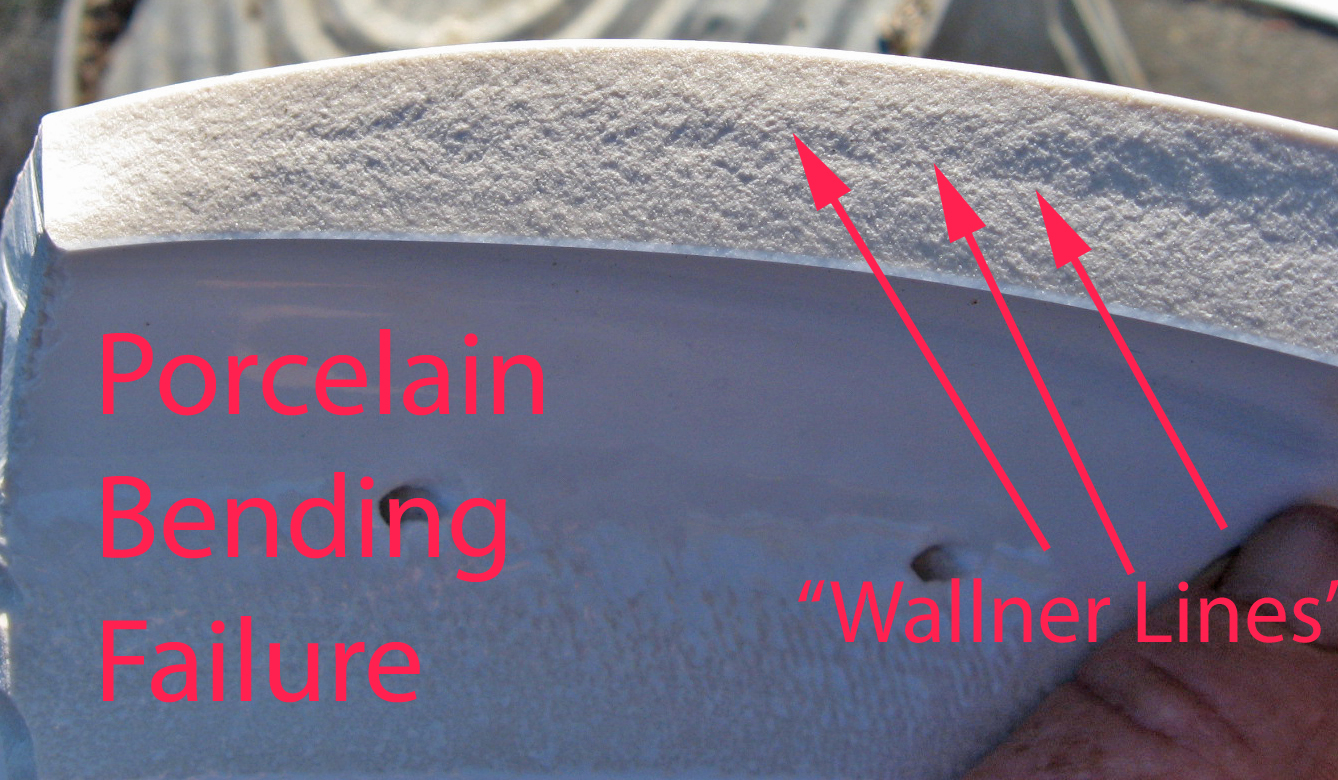California failure analysis lab is able to show similarities between glass failure analysis and porcelain failure analysis. The predominant tool for tracking a crack in glass is to look at “Wallner lines” These can tell the direction of travel of a crack in glass. This allows the glass failure expert to trace the crack back to the origin. He can then analyze the origin microscopically to determine the root cause of the failure. Glass is a smooth material, and the Wallner lines are readily visible. Porcelain is also a brittle material, and it also fails in a brittle manner. The difference is that the porcelain fracture surface is grainy and artifacts on the porcelain fracture surface (such as Wallner lines) are very difficult to see. Above are photographs of the fracture surfaces of two bending failures, one glass and one porcelain. The Wallner lines on the glass fracture surface are obvious and readily visible. The Wallner lines on the porcelain surface are very difficult to see and are best seen in oblique light. A sample of each is given above for the reader to see the differences/
Materials Failure Analysis and Process Engineering





Read Consulting Failure Analysis
Thomas L. Read, PhD,
1435 Fulton Road Santa Rosa, CA
Phone: 707-494-5089
email: info@readconsulting.com
Registered Professional Engineer
Thomas L. Read, PhD., CEO
Registered Professional Engineer
Certificate No. MF002174
State of California.

